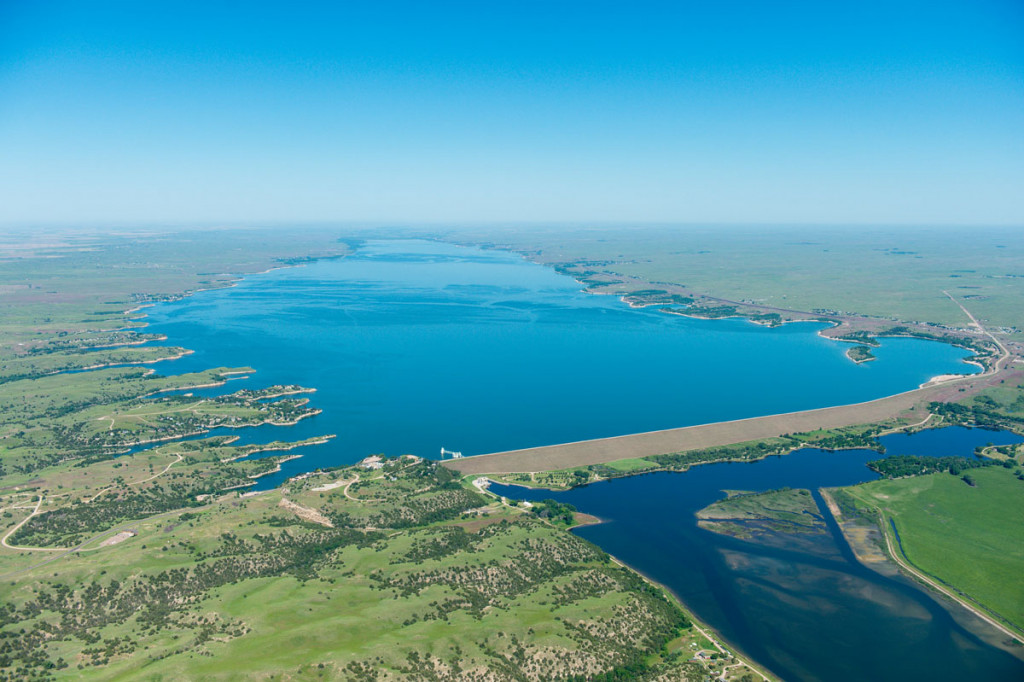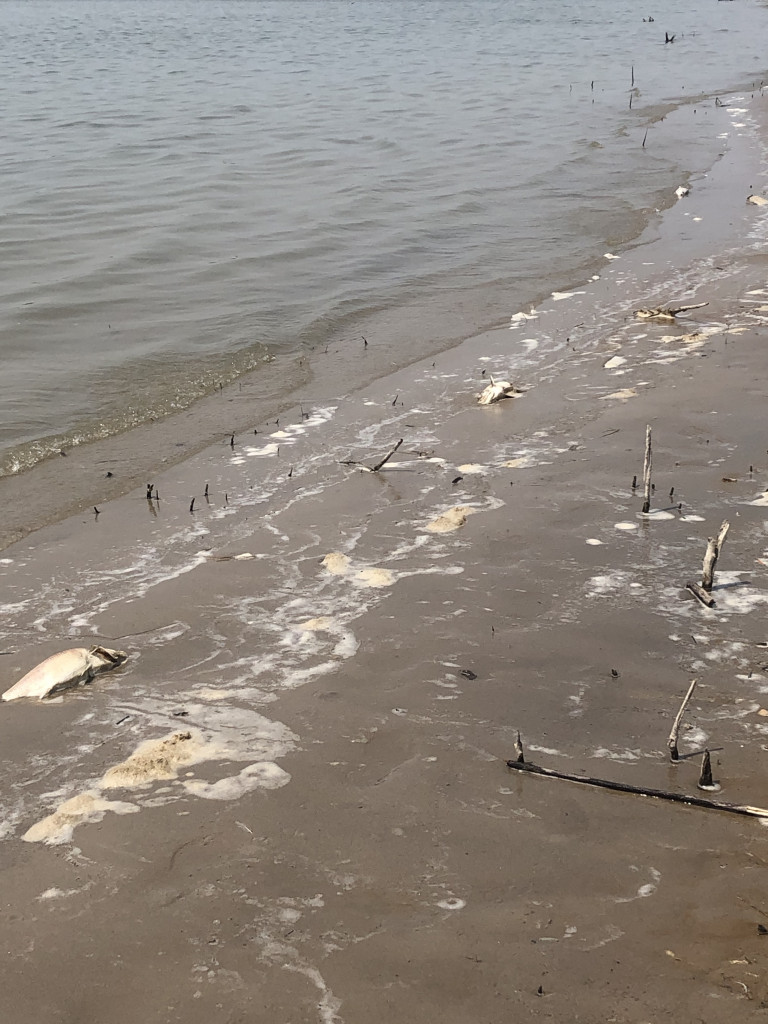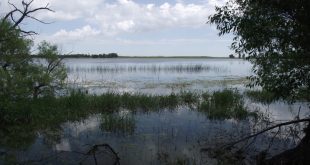There is no doubt “the” topic of the week has been the fish die-off at Lake McConaughy. Here is our official statement from yesterday:
LINCOLN, Neb. – The cause of a fish die-off at Lake McConaughy, Nebraska’s largest reservoir, remains inconclusive.
Fisheries biologists from the Nebraska Game and Parks Commission are investigating a die-off, in which approximately 1,000 dead fish were discovered on the west half of the reservoir. Adult white bass comprised 99% of those fish.
Point-source pollution – any single source from which pollutants are discharged, such as a pipe – does not appear to be a factor, and water quality parameters tested fall within normal ranges.
Routine harmful algal bloom and bacteria monitoring by the Nebraska Department of Environment and Energy also has yielded no significant elevated levels when tested Wednesday night. Martin Bay tested at .24 parts per billion, well below the 8 parts per billion that triggers a health alert.
Lake users are encouraged to contact Game and Parks at 308-284-8803 if they observe live, stressed fish as pathological/disease testing can only be conducted on live specimens.
Water-based recreation, such as fishing and harvesting fish, swimming and boating are deemed appropriate, at this time.
Officials will continue to investigate. Additional information will be released when available.

I really cannot tell you a whole lot more than that. Why did they die? We do not know for sure. However, I see a lot of speculation on the interwebs, let me comment about some of it.
First of all, lightning strikes do not cause fish die-offs. And, if they did, don’t you think it would be more than just white bass?
Extensive algae blooms can cause summer fish die-offs. When that happens, the algae are NOT the direct cause of the mortality. Summer fish die-offs from algae blooms are the result of oxygen sags that occur overnight or during periods of cloudy, calm weather. Algae blooms produce oxygen via photosynthesis during the day. At night, or when the sun is not shining, that same algae uses oxygen. If there is an excessive bloom of algae it can use so much oxygen overnight that it causes low oxygen levels which then cause fish die-offs. McConaughy does not have an algae bloom of that extent, and oxygen levels are being monitored. In addition, when that kind of thing happens, mortality will include various species and sizes of fish.
I have heard some wild theories of spawning being interrupted or something like that and then the fish died (spawnus interruptus????). I am still looking through references for any documentation of something like that. Fish will almost always attempt to spawn. Even if they do not, or if they do not deposit all of their eggs, fish re-absorb unspawned eggs all the time. The white bass spawn at McConaughy would have happened weeks ago. Yes, there are times when stressed fish coming out of the spawn are more likely to succumb to some sort of infection or disease, but again we have been unable to document anything like that on the fish that died.
I always say that fish kills confined mostly, if not entirely, to one species suggest some type of disease. It is hard to document that on dead fish, especially during the heat of the summer. As soon as they die secondary infections or decomposition ruin any chance of determining primary causes. Samples must be collected from “sick” fish BEFORE they have died in order to verify infections or toxins. We have not found any specimens like that.
Of course some folks want something to blame, and we all would like answers. Unfortunately, I will tell you that a lot of times we see fish die-offs and never know exactly what the cause was. There can be events that happen suddenly and for a short period of time at just the right place and time that cause mortality. We can speculate and make up scenarios, but there may never be any real proof.
Can these die-offs be bad enough to impact populations and fishing? Yes, they can. However, keep a couple things in mind: First, natural mortality rates for wild populations of fish are significant. Depending on the species and sizes, annual mortality rates can exceed 50%! Usually, nothing can be done about natural mortality–“Mother Nature” is a cruel witch. Lastly, keep in mind that these events seldom eliminate a population; there will be survivors, and populations will rebound.
We will continue to ask questions and seek answers. If we learn anything more, we will let folks know. But, we may never know for sure.

 Nebraskaland Magazine
Nebraskaland Magazine



